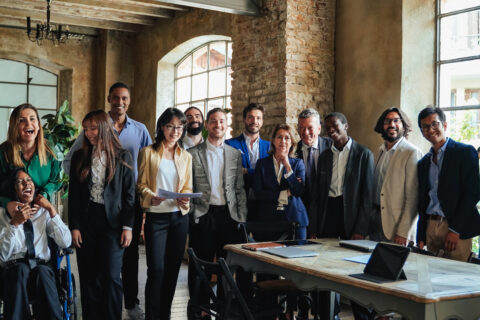The Importance of Accurate Property Descriptions for Insurance

In the world of property management, every detail matters, especially when it comes to accurate property descriptions for insurance purposes. Providing complete and precise descriptions ensures that your properties are adequately covered, minimizes the risk of disputes during claims, and prevents underinsurance or costly gaps in coverage. For property managers—especially those managing multiple short-term rental properties—accurate information is critical to safeguarding investments and maintaining smooth operations.
This post explores the importance of property descriptions for insurance, what key elements to include, and how these details can affect coverage, premiums, and claim outcomes.
Why Accurate Property Descriptions Matter
When it comes to securing insurance for rental properties, the devil is in the details. Insurers rely on property descriptions to assess risk, determine coverage limits, and calculate premiums. An incomplete or inaccurate description can lead to:
- Underinsurance: Leaving you financially exposed if repair or replacement costs exceed the policy limits.
- Claim Disputes: Insurance companies may deny claims if they discover discrepancies in property descriptions.
- Premium Miscalculations: Inaccurate descriptions can result in either paying too much for insurance or being under-covered.
- Regulatory Issues: Some jurisdictions require certain disclosures and descriptions to meet insurance standards.
For property managers juggling multiple short-term rental units, accurate documentation is essential to ensure the right level of protection across their portfolio.
What Should Be Included in Property Descriptions for Insurance?
Providing accurate property descriptions requires going beyond the basics. A complete description ensures the insurer understands the full scope of the property, minimizing any surprises during the underwriting or claims process.
Essential Elements to Include:
Property Location and Size:
- Full address, including any unit numbers
- Square footage of both interior and exterior spaces.
Construction Materials and Age:
- Type of building materials (e.g., brick, wood, metal).
- Year of construction and any major renovations.
Roof and Foundation Details:
- Type, material, and condition of the roof.
- Foundation type (slab, crawl space, basement).
Amenities and Fixtures:
- Pools, garages, HVAC systems, and fireplaces.
- Appliances provided to renters.
Safety Features:
- Fire alarms, sprinkler systems, and security systems.
Property Use and Occupancy:
- Is it a short-term rental, long-term lease, or commercial property?
- How many occupants are allowed at one time?
Providing these details helps insurers determine the appropriate coverage and reduces the chances of underinsurance.
Avoiding Common Mistakes in Property Descriptions
Errors in property descriptions for insurance can have serious financial consequences. Here are a few common mistakes and how to avoid them:
Overlooking Renovations
Any major upgrades—like new roofing, flooring, or HVAC systems—must be reported to the insurer to ensure coverage reflects the property’s current value.
Solution: Maintain a renovation log and update insurance carriers after every upgrade.
Misclassifying Property Use
Renting a property as a vacation rental without informing the insurer may void coverage if a claim arises during guest occupancy.
Solution: Clearly state how the property will be used (short-term, long-term, etc.) and confirm the policy covers that type of rental.
Understating Replacement Value
Listing only the market value of a property instead of the replacement cost can leave you underinsured.
Solution: Work with your insurer to determine the accurate replacement cost of the property, accounting for labor and materials.
How Accurate Property Descriptions Impact Insurance Premiums
Your property’s description directly influences the insurance premium. The more precise the details, the more accurately the insurer can calculate the risk involved, ensuring you pay a fair price for coverage.
- Location: Properties in flood zones or areas prone to natural disasters may have higher premiums.
- Age and Condition: Older properties or those with outdated systems may result in higher insurance costs.
- Amenities: Pools and other luxury features can increase both the value of the property and the risk, leading to higher premiums.
- Security Features: Properties with enhanced security, like surveillance cameras and alarm systems, may qualify for discounts.
Accurate descriptions ensure the premium matches the property’s real risk profile, helping you avoid overpaying or leaving critical assets uninsured.
How Accurate Descriptions Can Streamline the Claims Process
Filing a claim after property damage is stressful enough without dealing with disputes over policy coverage. Providing accurate property descriptions from the start can make the claims process smoother and faster.
- Fewer Delays: Insurers will have all the necessary information to process claims quickly.
- Reduced Disputes: Discrepancies between the original description and the state of the property at the time of a claim could result in denial.
- Fair Payouts: If the property’s features and value are accurately documented, you’ll receive the appropriate compensation for covered damages.
For property managers handling multiple claims at once, accurate documentation can be a lifesaver in reducing administrative burdens.
Best Practices for Managing Property Descriptions
Managing property descriptions for several rental units can be challenging, especially for short-term rental managers with dynamic property portfolios. Here are some tips to stay organized and ensure your insurance policies remain accurate:
Use Digital Tools to Track Property Details
Property management software can help you keep accurate records of renovations, upgrades, and inspections. These tools also make it easier to update descriptions across multiple policies when necessary.
Perform Regular Property Inspections
Regular inspections help you stay on top of property conditions and identify potential issues before they become expensive claims.
Work with Insurance Professionals
Collaborate with insurance brokers/agents who specialize in rental properties, like Safely, to ensure you have the right coverage. They can help you navigate policy requirements and make necessary updates to property descriptions.
Protect Your Investment with Accurate Property Descriptions
Accurate property descriptions are essential for securing the right insurance coverage and avoiding costly issues. Whether you manage a single rental unit or a large portfolio, taking the time to document every detail ensures your properties are adequately protected. From calculating premiums to streamlining claims, precise descriptions play a critical role in managing risk and safeguarding your investments.
At Safely, we understand how vital it is to protect your short-term rental properties. That’s why we offer tailored insurance solutions for short-term rental managers, designed to meet the unique challenges of this market. Contact us today to learn more about our insurance options and guest screening services to keep your properties secure and profitable.






